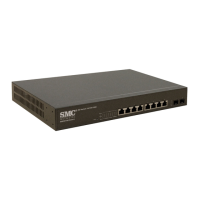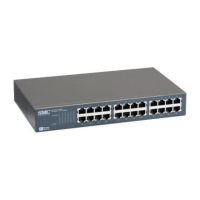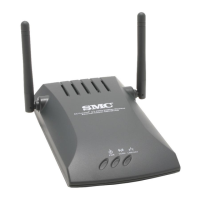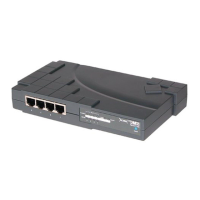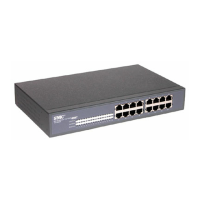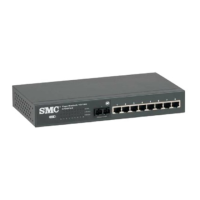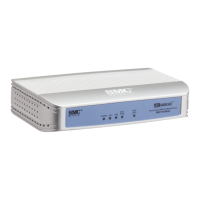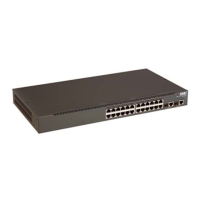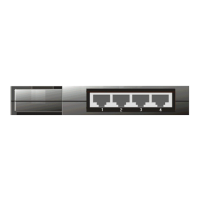C
HAPTER
5
| Monitoring the Switch
Showing MLD Snooping Information
– 237 –
WEB INTERFACE
To display IGMP Source-Specific Information, click Monitor, IGMP Snooping,
IGMP SSM Information.
Figure 117: IPv4 SSM Information
SHOWING MLD SNOOPING INFORMATION
Use the MLD Snooping pages to display MLD snooping statistics, port
members of each service group, and information on source-specific groups.
SHOWING MLD
SNOOPING STATUS
Use the IGMP Snooping Status page to display MLD querier status and
snooping statistics for each VLAN carrying multicast traffic, and the ports
connected to an upstream multicast router/switch.
PATH
Monitor, IPMC, MLD Snooping, Status
PARAMETERS
These parameters are displayed:
Statistics
◆ VLAN ID – VLAN Identifier.
◆ Querier Version – MLD version used by the switch when serving as
the MLD querier.
◆ Host Version – MLD version used when used by this switch when
serving as a host in MLD proxy mode.
◆ Querier Status – Shows the Querier status as “ACTIVE” or “IDLE.”
When enabled and selected through the bidding process, the switch can
serve as the Querier, which is responsible for asking hosts if they want
to receive multicast traffic.
◆ Queries Transmitted – The number of transmitted Querier messages.
◆ Queries Received – The number of received Querier messages.
◆ V1 Reports Received – The number of received MLD Version 1
reports.
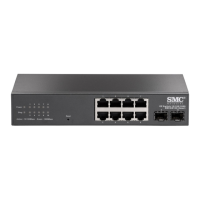
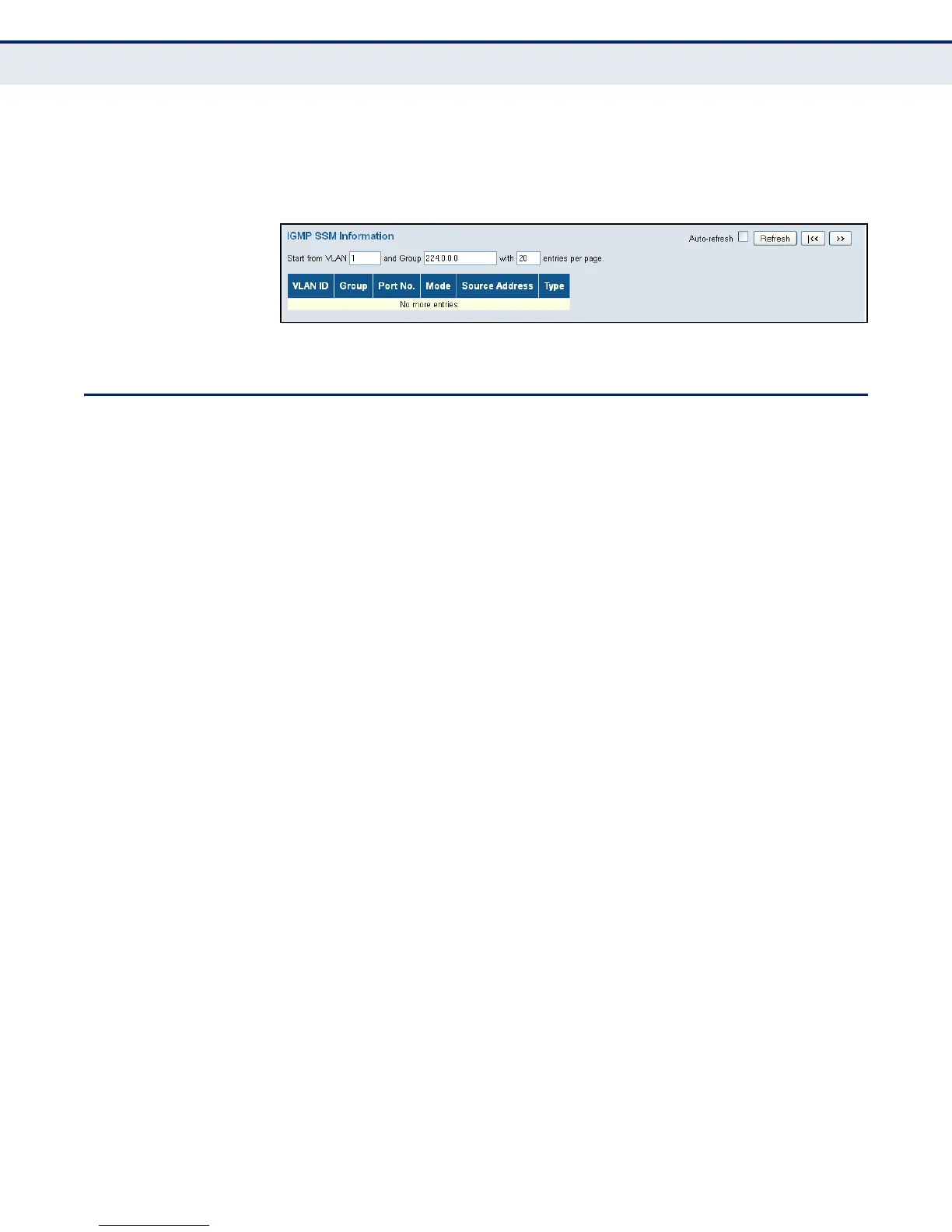